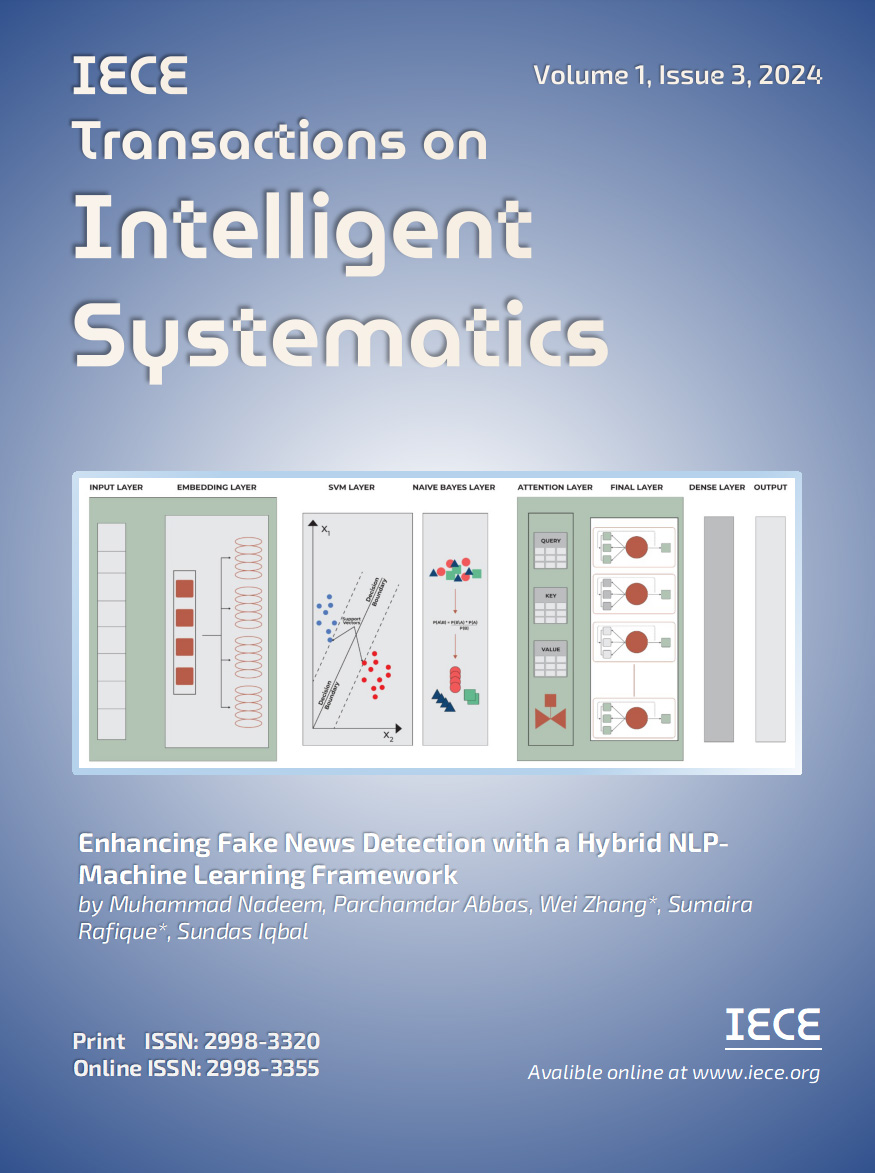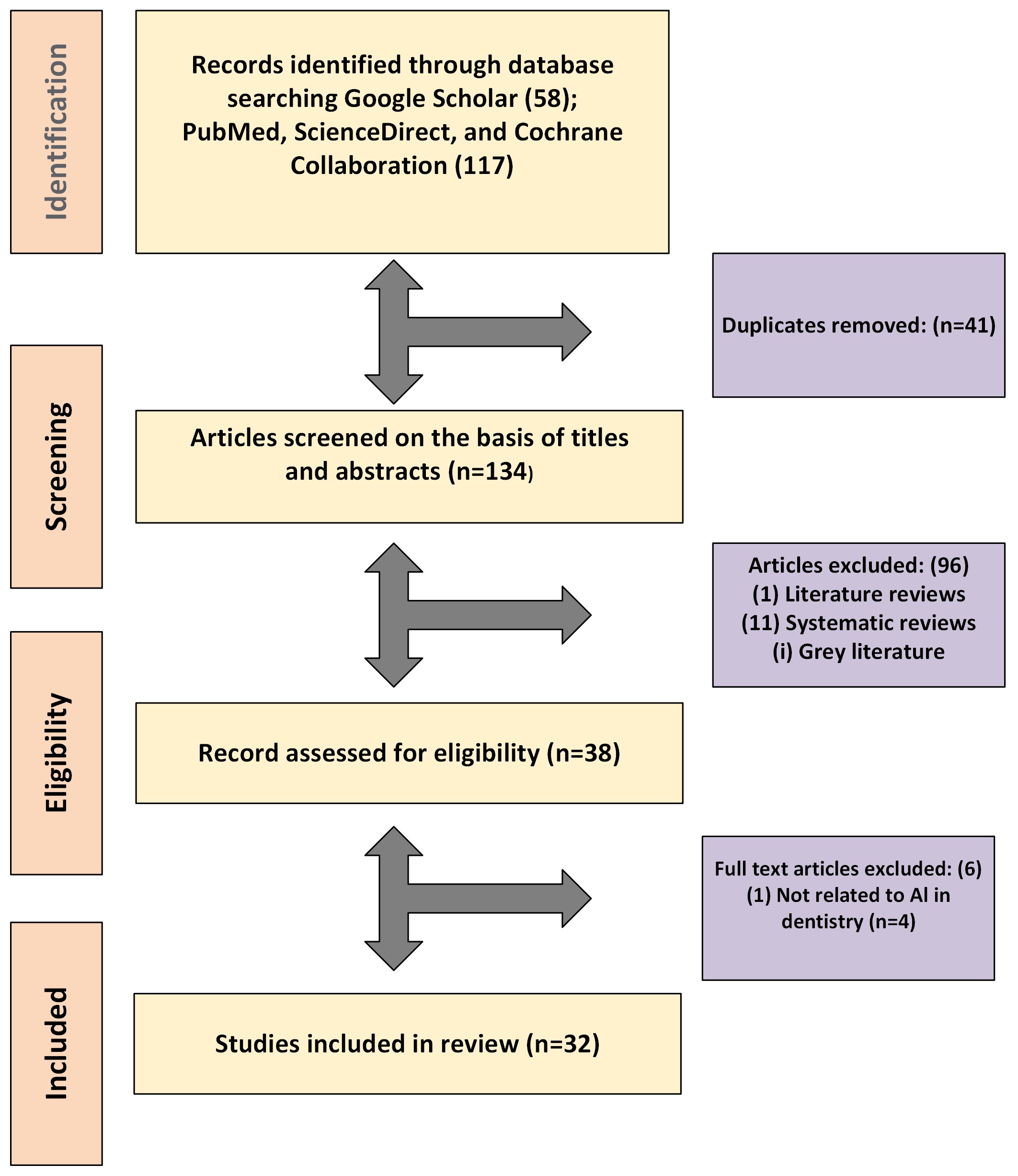IECE Transactions on Intelligent Systematics
ISSN: 2998-3355 (Online) | ISSN: 2998-3320 (Print)
Email: [email protected]


 Submit Manuscript
Edit a Special Issue
Submit Manuscript
Edit a Special Issue

[1] Sims, C. A., Berketa, J., & Higgins, D. (2020). Is human identification by dental comparison a scientifically valid process?. Science & Justice, 60(5), 403-405.
[2] Kirchhoff, S., Fischer, F., Lindemaier, G., Herzog, P., Kirchhoff, C., Becker, C., ... & Eisenmenger, W. (2008). Is post-mortem CT of the dentition adequate for correct forensic identification?: comparison of dental computed tomograpy and visual dental record. International journal of legal medicine, 122, 471-479.
[3] Galante, N., Cotroneo, R., Furci, D., Lodetti, G., & Casali, M. B. (2023). Applications of artificial intelligence in forensic sciences: C urrent potential benefits, limitations and perspectives. International journal of legal medicine, 137(2), 445-458.
[4] Mohammad, N., Ahmad, R., Kurniawan, A., & Mohd Yusof, M. Y. P. (2022). Applications of contemporary artificial intelligence technology in forensic odontology as primary forensic identifier: A scoping review. Frontiers in artificial intelligence, 5, 1049584.
[5] Al-Kheraif, A. A., Divakar, D. D., Sarode, S. C., ... Khanagar, S. B., Vishwanathaiah, S., Naik, S., & Patil, S. (2021). Application and performance of artificial intelligence technology in forensic odontology–A systematic review. Legal Medicine, 48, 101826.
[6] Thurzo, A., Kosnáčová, H. S., Kurilová, V., Kosmeľ, S., Beňuš, R., Moravanský, N., ... & Varga, I. (2021, November). Use of advanced artificial intelligence in forensic medicine, forensic anthropology and clinical anatomy. In Healthcare (Vol. 9, No. 11, p. 1545). MDPI.
[7] Milošević, D., Vodanović, M., Galić, I., & Subašić, M. (2022). A comprehensive exploration of neural networks for forensic analysis of adult single tooth x-ray images. IEEE access, 10, 70980-71002.
[8] Bui, R., Iozzino, R., Richert, R., Roy, P., Boussel, L., Tafrount, C., & Ducret, M. (2023). Artificial intelligence as a decision-making tool in forensic dentistry: a pilot study with I3M. International journal of environmental research and public health, 20(5), 4620.
[9] Carrillo-Perez, F., Pecho, O.E., Morales, J.C., Paravina, R.D., Della Bona, A., Ghinea, R., Pulgar, R., Pérez, M.D.M. and Herrera, L.J., 2022. Applications of artificial intelligence in dentistry: A comprehensive review. Journal of Esthetic and Restorative Dentistry, 34(1), pp.259-280.
[10] Ahmed, N., Abbasi, M. S., Zuberi, F., Qamar, W., Halim, M. S. B., Maqsood, A., & Alam, M. K. (2021). Artificial intelligence techniques: analysis, application, and outcome in dentistry—a systematic review. BioMed research international, 2021(1), 9751564.
[11] Pathak, J., Swain, N., Pathak, D., Shrikanth, G., & Hosalkar, R. (2021). Role of Various Stakeholders in Application of Artificial Intelligence to Forensic Odontology-A Potential Perspective. Annals of Dental Specialty, 9(1-2021), 47-52.
[12] Ahmed Alaa El-Din, E. (2022). Artificial intelligence in forensic science: Invasion or revolution?. Egyptian Society of Clinical Toxicology Journal, 10(2), 20-32.
[13] Heo, M. S., Kim, J. E., Hwang, J. J., Han, S. S., Kim, J. S., Yi, W. J., & Park, I. W. (2021). Artificial intelligence in oral and maxillofacial radiology: what is currently possible?. Dentomaxillofacial Radiology, 50(3), 20200375.
[14] Kishimoto, T., Goto, T., Matsuda, T., Iwawaki, Y., & Ichikawa, T. (2022). Application of artificial intelligence in the dental field: A literature review. Journal of Prosthodontic Research, 66(1), 19-28.
[15] Ahmed, O., Saleem, S. A., Khan, A. A., Daruwala, S., & Pettiwala, A. (2023). Artificial intelligence in forensic odontology–A review. International Dental Journal of Students’ Research, 11(2).
[16] Artificial intelligence: advancing automation in Jadhav, E. B., Sankhla, M. S., & Kumar, R. (2020). forensic science & criminal investigation. Journal of Seybold Report ISSN NO, 1533, 9211.
[17] Vodanović, M., Subašić, M., Milošević, D., Galić, I., & Brkić, H. (2023). Artificial intelligence in forensic medicine and forensic dentistry. The journal of forensic odonto-stomatology, 41(2), 30.
[18] Mesejo, P., Martos, R., Ibáñez, Ó., Novo, J., & Ortega, M. (2020). A survey on artificial intelligence techniques for biomedical image analysis in skeleton-based forensic human identification. Applied Sciences, 10(14), 4703.
[19] Khan, H., Jan, Z., Ullah, I., Alwabli, A., Alharbi, F., Habib, S., ... & Koo, J. (2024). A deep dive into AI integration and advanced nanobiosensor technologies for enhanced bacterial infection monitoring. Nanotechnology Reviews, 13(1), 20240056.
[20] Tufail, A. B., Ma, Y. K., Zhang, Q. N., Khan, A., Zhao, L., Yang, Q., ... & Ullah, I. (2021). 3D convolutional neural networks-based multiclass classification of Alzheimer’s and Parkinson’s diseases using PET and SPECT neuroimaging modalities. Brain Informatics, 8, 1-9.
[21] Kurniawan, A., Novianti, A., Lestari, F. A., & Ramaniasari, S. M. (2024). Integrating artificial intelligence and adult dental age estimation in forensic identification: A literature review. World Journal of Advanced Research and Reviews, 21(2), 1374-1379.
[22] Kılıc, M. C., Bayrakdar, I. S., Çelik, Ö., Bilgir, E., Orhan, K., Aydın, O. B., ... & Yılmaz, A. B. (2021). Artificial intelligence system for automatic deciduous tooth detection and numbering in panoramic radiographs. Dentomaxillofacial Radiology, 50(6), 20200172.
[23] Ahmed, M. J., Afridi, U., Shah, H. A., Khan, H., Bhatt, M. W., Alwabli, A., & Ullah, I. (2024). CardioGuard: AI-driven ECG authentication hybrid neural network for predictive health monitoring in telehealth systems. SLAS technology, 29(5), 100193.
[24] Mohi ud din dar, G., Bhagat, A., Ansarullah, S. I., Othman, M. T. B., Hamid, Y., Alkahtani, H. K., ... & Hamam, H. (2023). A novel framework for classification of different Alzheimer’s disease stages using CNN model. Electronics, 12(2), 469.
[25] Lemoine, A. (2019). Odontology & Artificial Intelligence. PQDT-Global.
[26] Pauwels, R. (2021). A brief introduction to concepts and applications of artificial intelligence in dental imaging. Oral radiology, 37(1), 153-160.
[27] Putra, R. H., Doi, C., Yoda, N., Astuti, E. R., & Sasaki, K. (2022). Current applications and development of artificial intelligence for digital dental radiography. Dentomaxillofacial Radiology, 51(1), 20210197.
[28] Haq, I., Mazhar, T., Malik, M. A., Kamal, M. M., Ullah, I., Kim, T., ... & Hamam, H. (2022). Lung nodules localization and report analysis from computerized tomography (CT) scan using a novel machine learning approach. Applied Sciences, 12(24), 12614.
[29] Rasheed, Z., Ma, Y. K., Ullah, I., Ghadi, Y. Y., Khan, M. Z., Khan, M. A., ... & Shehata, A. M. (2023). Brain tumor classification from MRI using image enhancement and convolutional neural network techniques. Brain Sciences, 13(9), 1320.
[30] Thurzo, A., Jančovičová, V., Hain, M., Thurzo, M., Novák, B., Kosnáčová, H., ... & Moravanský, N. (2022). Human remains identification using Micro-CT, Chemometric and AI methods in Forensic Experimental Reconstruction of Dental patterns after concentrated sulphuric acid significant impact. Molecules, 27(13), 4035.
[31] Khanagar, S. B., Al-Ehaideb, A., Maganur, P. C., Vishwanathaiah, S., Patil, S., Baeshen, H. A., ... & Bhandi, S. (2021). Developments, application, and performance of artificial intelligence in dentistry–A systematic review. Journal of dental sciences, 16(1), 508-522.
[32] Ahmad, I., Yao, C., Li, L., Chen, Y., Liu, Z., Ullah, I., ... & Chen, S. (2024). An efficient feature selection and explainable classification method for EEG-based epileptic seizure detection. Journal of Information Security and Applications, 80, 103654.
[33] Ur Rehman, I., Ullah, I., Khan, H., Guellil, M. S., Koo, J., Min, J., ... & Lee, M. Y. (2024). A comprehensive systematic literature review of ML in nanotechnology for sustainable development. Nanotechnology Reviews, 13(1), 20240069.
[34] Sessa, F., Esposito, M., Cocimano, G., Sablone, S., Karaboue, M. A. A., Chisari, M., ... & Salerno, M. (2024). Artificial intelligence and forensic genetics: current applications and future perspectives. Applied Sciences, 14(5), 2113.
[35] Thurzo, A., Urbanová, W., Novák, B., Czako, L., Siebert, T., Stano, P., ... & Varga, I. (2022, July). Where is the artificial intelligence applied in dentistry? Systematic review and literature analysis. In Healthcare (Vol. 10, No. 7, p. 1269). MDPI.
[36] Khan, H., Ullah, I., Shabaz, M., Omer, M. F., Usman, M. T., Guellil, M. S., & Koo, J. (2024). Visionary vigilance: Optimized YOLOV8 for fallen person detection with large-scale benchmark dataset. Image and Vision Computing, 149, 105195.
IECE Transactions on Intelligent Systematics
ISSN: 2998-3355 (Online) | ISSN: 2998-3320 (Print)
Email: [email protected]

Portico
All published articles are preserved here permanently:
https://www.portico.org/publishers/iece/